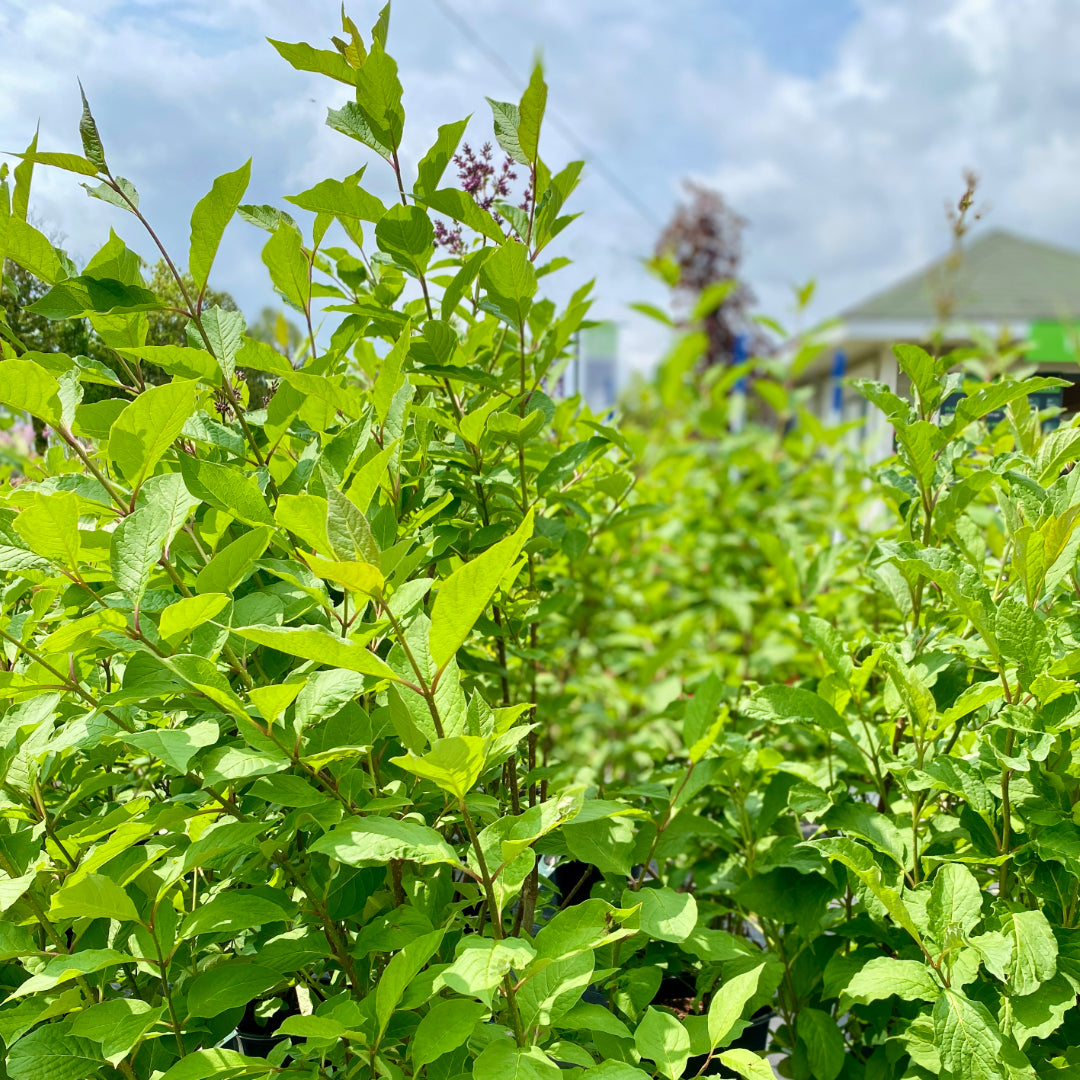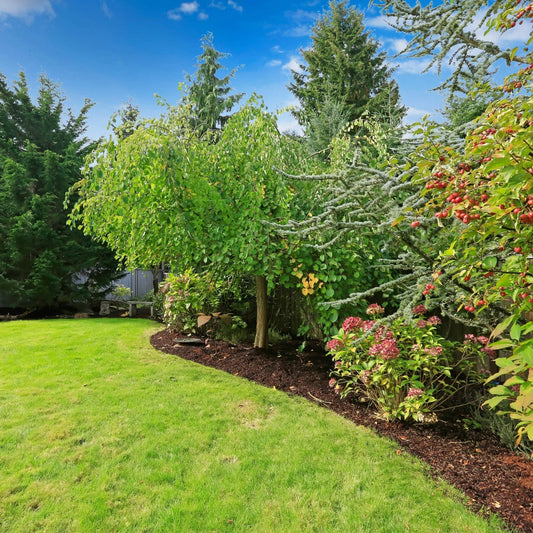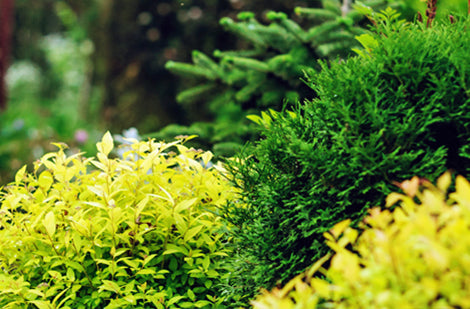Syringa x prestoniae 'Nocturne'
Syringa x prestoniae 'Nocturne' - Preston Lilac 'Nocturne'
Syringa x prestoniae 'Nocturne' - Preston Lilac 'Nocturne'
Exposure
- Sun
Rusticity
Bloom time
- May
- June
- Pink and wine-red blooms
- Delicate fragrance
- Extremely cold hardy (Zone 2b)
- Non-suckering
- Attracts butterflies
Discover the captivating splendour of Preston Lilac 'Nocturne' (Syringa x prestoniae 'Nocturne'), a true revelation for your garden! This exceptional lilac stands out with its magnificent trusses of rich pink flowers opening from distinctive wine-red buds, offering a shocking contrast. Extremely hardy and elegant, it will transform your space into a haven of fragrant beauty, promising a unique floral display every late spring.
Characteristics
- Foliage: Forest green deciduous foliage, with pointy leaves that turn buttery yellow in fall, adding seasonal interest. Its relatively coarse texture helps it stand apart from other landscape plants with finer foliage.
- Flowering: Produces magnificent trusses of lightly-scented rich pink flowers rising above the foliage in late spring. These emerge from distinctive crimson (wine-red) flower buds, creating a striking contrast within each flower head.
- Light Requirements: Should only be grown in full sunlight (6+ hours per day) for optimal flowering and healthy growth.
- Habit: A multi-stemmed deciduous shrub with an upright spreading habit of growth. It tends to be a little leggy, with a typical clearance of 90 cm (3 feet) from the ground, making it suitable for planting under power lines.
- Growth: Grows at a medium rate. It will grow to be about 2.75 meters (9 feet) tall at maturity, with a spread of about 2.1 meters (7 feet). Under ideal conditions, it can be expected to live for approximately 30 years.
- Humidity: Very adaptable to both dry and moist locations. It should do just fine under average home landscape conditions.
- Soil: Very adaptable and not particular as to soil type or pH. Requires well-drained soil.
- Temperature: Extremely hardy. Tolerates winter cold very well.
- Watering: Drought tolerant once established. A medium watering schedule is beneficial, but it is very adaptable to average conditions.
- Resistances: Non-suckering. Has no significant negative characteristics. Highly tolerant of urban pollution and will even thrive in inner-city environments.
Usage
- Types of Use: Recommended for accent planting, mass planting, hedges or screening, and general garden use. It is a superb specimen plant for a focal point.
- Decorative Benefits: Its unique contrast between wine-red buds and pink flowers makes it a particularly attractive lilac. Its abundant and delicately scented late spring bloom is a major asset, and its buttery yellow fall foliage adds seasonal interest. It also attracts butterflies.
Maintenance
- Fertilization: A spring compost application or a balanced fertilizer can promote healthy growth and generous flowering but is not always necessary in good soil conditions.
- Pruning: Should only be pruned after flowering to avoid removing any of the current season's flowers. Dead or dry branches can be removed at any time.
- Planting:
- Spacing: Approximately 1.5 to 2 meters (5 to 7 feet) apart to allow for its upright spreading habit to develop.
- Depth: Plant at the same depth as it was in its container.
- Period: Spring or early fall are the best times for planting.
Plant details
Dimensions
Dimensions
Characteristics
Characteristics
Habit:
- Upright
Flowering colours:
- Pink
- Purple (buds)
- Red (buds)
Plant needs
Plant needs
Watering:
- Tolerates dry, well-drained soil
- Tolerates moist soil
Maintenance:
- Easy
- Prune after flowering
Soil requirement:
Features
Features
Resistance:
- Heat
- Cold
- Drought
- Pollution
Attract:
- Butterflies
Use:
- Accent
- Hedge
- Mass Planting
- Flowerbed
Attribute:
- Moderate Growth
- Cut Flower
- Long Blooming
- Fragrant
- Non-Toxic to Cats
- Non-Toxic to Dogs
- Autumn Colour



Related articles
-

Trees and shrubs for small space landscaping
Read the articleHaving an exceptional garden is possible, even in the city! Discover our selection of trees and shrubs perfect for small lots, and transform your outdoor space into a green oasis.
-

When and how to plant shrubs: successful planti...
Read the articleDiscover our complete guide to mastering shrub planting and care. Learn the best planting times, essential techniques, along with tips for watering, fertilizing, and managing common issues. Our practical advice...
-

Choosing shrubs to plant
Read the articleIn exterior design, shrubs represent furniture. They set the scene and set the tone for the flower bed. Shrubs constitute the living architectural elements of the landscaped garden. As proof,...
-

Shrubs: beautiful all year long
Read the articleLe grand choix d’espèces fournit l’occasion de varier les formes, les feuillages, et de créer des floraisons successives, bref, de composer un jardin magnifique à longueur d’année. Pour toutes ces...











